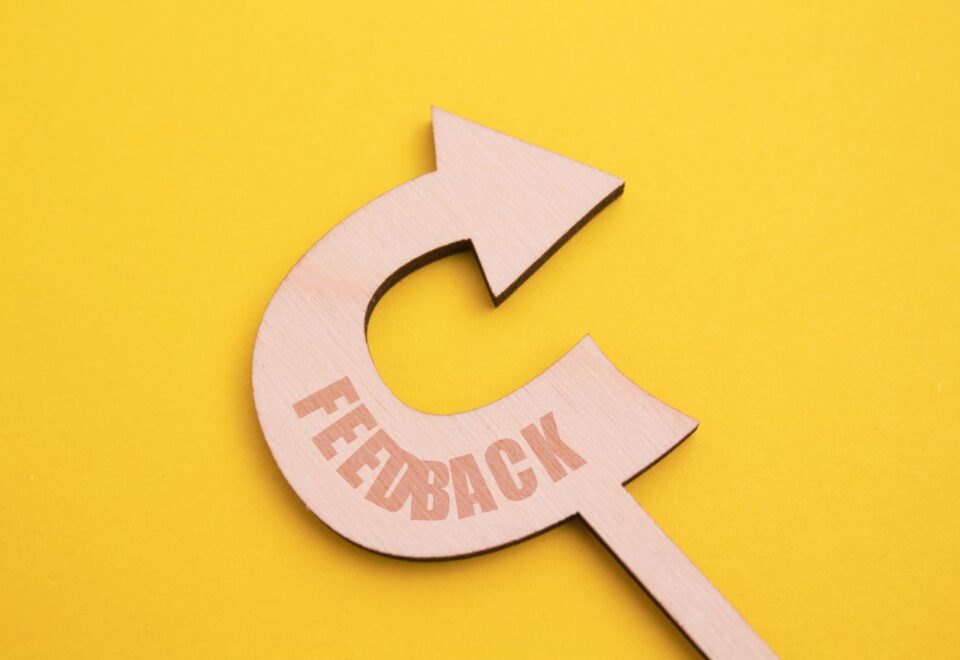Business success comes from more than just watching the bottom line. Companies that stand the test of time build excellence on three critical foundations: efficient operations, strong workplace culture, and exceptional customer care. When these three elements align, something remarkable happens — staff bring their best every day, processes run without friction, and customers become advocates rather than just buyers.
What separates truly exceptional companies from the merely adequate? It starts with real values that guide everyday decisions, not platitudes on posters. It’s having systems that catch issues early instead of constantly putting out fires. It means thanking people because you mean it, not because the calendar says it’s time for employee appreciation. It creates customer experiences that feel personal and thoughtful, never rushed or robotic. Companies that get these basics right develop the strength to handle tough times while finding smart ways to grow.
Streamlining Operations for Maximum Efficiency
Machine learning technology choices overhaul productivity by automating routine tasks that previously consumed valuable staff time. When systems handle data entry, scheduling, and basic customer inquiries automatically, teams can focus on complex work that requires human judgment and creativity. Advanced AI solutions can fuel growth through predictive analytics tools that anticipate customer needs, chatbots that provide continuous support, and dashboards that monitor performance in real time.
Measuring operations with carefully selected metrics provides essential visibility into organizational health. Effective measurements connect directly to business objectives rather than generating data for its own sake. Companies gain significant advantages when they establish regular review cycles to identify trends, spot emerging issues, and make evidence-based adjustments before small problems become major obstacles.
Optimizing Cross-Departmental Collaboration and Project Management
Breaking down silos between departments starts with establishing basic communication channels. Implement weekly 15-minute cross-functional stand-ups focused solely on coordination issues. Create shared digital workspaces where everyone can access critical information without endless email chains.
Once these foundations are in place, move to structured coordination by establishing clear escalation paths for decisions affecting multiple teams, with specific timeframes for responses. For complex situations, designate integration specialists who understand multiple departmental processes and can serve as translators during collaborative projects.
Effective collaboration becomes particularly crucial when managing employee relocations for projects, as the relocation process begins well before anyone packs a box. First, create standardized documentation capturing essential information about timing, resources needed, and location specifics so nothing falls through the cracks. Since relocations involve numerous departments, from HR to facilities to IT, establish a single point of contact who coordinates across teams and keeps the process moving.
Next, a prioritization system that balances urgent transfer needs with ongoing operations should be implemented to prevent disruptions to either. For relocating employees, visual tracking tools can help provide clarity about their move timeline while giving managers visibility into progress.
As the move approaches, build buffer time into relocation schedules to accommodate the inevitable unexpected challenges without derailing overall project timelines. After each completed move, conduct a brief review identifying specific improvements that will make future employee transfers smoother and more efficient.
Ready to empower your team to drive growth, culture, and customer success?
Contact Growth Hackers
Leveraging Customer Insights and Continuous Improvement
Customer feedback collection should follow a structured progression from broad to specific insights. Begin with quarterly Net Promoter Score surveys, using the same three core questions plus one rotating question targeting your current focus area. Move from collection to organization by creating a centralized feedback database that tags comments by department, product, and sentiment to identify patterns.
Turning customer insights into operational improvements requires systematic problem-solving. Begin by training team leads in basic process mapping to identify and eliminate unnecessary steps in current workflows. Once baseline processes are documented, implement monthly friction audits, where employees identify their three biggest operational obstacles.
Address these pain points by creating cross-functional improvement teams with 90-day charters to solve specific high-impact problems. You can test these solutions through a simple A/B testing protocol to evaluate proposed process changes. Be sure to reinforce the importance of operational excellence by celebrating improvements with the same enthusiasm as sales victories, sharing specific metrics on time or resources saved.
Employee Appreciation and Wellbeing
People need to know their work matters. When you recognize both breakthrough achievements and daily contributions, you build a team that stays motivated through challenges. Recognition doesn’t need to be complicated — sometimes a sincere “thank you” in front of colleagues makes more impact than formal awards. What counts is connecting specific actions to your company’s core values. This shows employees you notice their efforts while reinforcing what your business stands for.
Building Recognition That Actually Works
Start simple: ask people how they prefer to be recognized. Some thrive on public praise while others find it mortifying — knowing these preferences prevents well-intentioned recognition from backfiring. Create easy ways for peers to acknowledge each other, like a dedicated Slack channel or five minutes in weekly meetings for shout-outs. Train managers to be specific — “Your detailed analysis saved us from making an expensive mistake” means more than “good job on that report.”
Good communication revitalizes workplace wellbeing by creating clarity and connection. Begin with predictable routines like brief daily check-ins, keep projects on track, while monthly all-hands meetings are more devoted to the bigger picture. Make tough conversations less threatening by training managers to address issues promptly rather than letting problems fester. Create safe channels for employees to speak up about concerns without fear of backlash.
Balancing Work Demands with Human Needs
Work imbalances, such as some people working too late too often and others frequently leaving too early, can breed resentment and burnout if left unaddressed. To combat this, clear expectations about after-hours communication should be created. For example, is that 10 p.m. email truly urgent, or can it wait until morning? Give people uninterrupted time to focus by establishing “no meeting” blocks or email-free afternoons, and watch for warning signs like increased sick days or declining work quality that often signal burnout.
Help people see a future with your company by talking about career growth from day one. Instead of vague promises about advancement, show concrete examples of how others have progressed. Create learning opportunities that match how adults develop skills: through challenging assignments, feedback, and application, not just passive training.
Enhancing Customer Satisfaction
The way your team interacts with customers can make or break your entire business reputation. When employees truly understand your products and have strong people skills, they transform even difficult situations into relationship-building moments. Great service doesn’t happen by accident. It comes from intentional training and systems that put customers at the center of decision-making.
Customer feedback provides the roadmap for service improvements, but only when you collect and use it effectively. The most successful companies gather insights through multiple channels and analyze patterns rather than just individual comments. Most importantly, they take visible action on what they learn. This approach builds trust with customers while continuously refining your offerings to better meet their needs.
It’s time to build a strong foundation for growth, culture, and customer success today!
Building Service Excellence Through People and Systems
Start by equipping your team with the knowledge they need to succeed. Beyond teaching product details, train employees to recognize emotional cues and adapt their approach to different customer personalities. Role-play challenging scenarios regularly so staff develop confidence in handling unexpected situations. Create simple decision-making frameworks that empower frontline employees to solve problems without constant manager approval.
Data-driven customer tracking enables targeted service with a personal touch. Begin by identifying key interaction points in your customer journey where personalization makes the most impact. Create systems to capture meaningful preferences without being intrusive.
You might note communication style preferences or past challenges they’ve experienced – develop protocols for sharing this information across departments so customers don’t have to repeat themselves with each new contact. Train teams to use small personalization opportunities that show attentiveness without requiring complex technology. Using names, referencing previous interactions, or acknowledging important milestones all create a connection.
Turning Feedback into Improvement and Building Trust
The best approach to feedback collection involves brief, focused surveys delivered at pivotal moments in the customer journey, avoiding lengthy questionnaires that customers rarely complete. Your frontline staff can also gather valuable insights during natural conversations if you provide them with thoughtful prompts and questions.
Once feedback accumulates, categorization systems will help you identify patterns across hundreds of individual comments. Instead of lengthy reports, relevant departments will appreciate receiving feedback themes through visual dashboards that highlight actionable insights.
When properly handled, complaints become powerful opportunities to build loyalty. A straightforward three-step recovery process works in nearly every situation. Acknowledge the problem without becoming defensive, clearly explain your planned changes, and later follow up to verify improvement. Many customers remain loyal after a well-handled problem because they’ve seen your commitment to making things right.
To build further trust, regular “You told us, we changed this” updates demonstrate that customer input drives meaningful improvements. Clear organizational management improves service consistency by defining who can make which improvements without lengthy approval chains. While monthly reviews of competitor innovations provide valuable perspective, your focus should remain on enhancements that align with your unique strengths rather than simply mimicking others.
Final Thoughts on Growth, Culture and Customer Success
When you build a culture where people genuinely want to work, you create the foundation for everything else. Your team develops smarter processes that save time and reduce frustration, employees who feel valued naturally take better care of your customers, and satisfied customers keep coming back while telling others about you.
The most successful companies don’t treat these as separate initiatives but as connected parts of the same story. By regularly checking how you’re doing and making sustainability part of your business model, you build the kind of resilience that helps you weather tough times and spot new opportunities others miss.
Growth Hackers is a leading growth marketing agency helping businesses from all over the world grow. There is no fluff with Growth Hackers. We help entrepreneurs and business owners align their strategies with goals for growth, culture, and customer success, increase their productivity, generate qualified leads, optimize their conversion rate, gather and analyze data analytics, acquire and retain users and increase sales. We go further than brand awareness and exposure. We make sure that the strategies we implement move the needle so your business grow, strive and succeed. If you too want your business to reach new heights, contact Growth Hackers today so we can discuss about your brand and create a custom growth plan for you. You’re just one click away to skyrocket your business.









